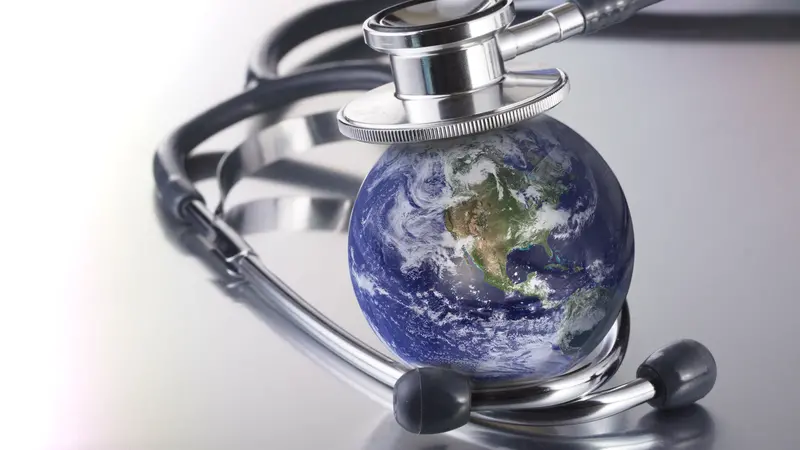

Planet and People Connection

Planet and People Connection
Environmental Medicine and Detoxification
Health and well-being are the product of genes and how those genes express themselves based on diet, lifestyle choices, and environmental factors. Life in today’s world exposes us to a large number of potential harmful environmental agents, as discussed in Understanding Toxins in Our Environment. Many individuals have negative health consequences from their harmful environmental exposures and need help identifying and eliminating those toxins.
Environmental Medicine
Environmental medicine focuses on the interaction between an individual and their surroundings and health. It targets triggers (such as outdoor and indoor air quality, water quality, and exposures to chemicals and heavy metals) that can affect any system in the body and lead to a host of symptoms and diseases. An individual’s environment includes their home, community, and workplace or school, and environmental hazards may be borne by soil, water, and air.
According to the American Academy of Environmental Medicine, “There are causes for all illnesses, and the obvious but not well accepted fact [is] that what we eat or are exposed to in our environment, has a direct effect upon our health.”
Environmental medicine is based on a “total load” concept; in other words, individuals are a product of all of the exposures of the environments in which they have lived, and such accumulation impacts their body’s physiological systems’ ability to adapt and stay healthy. Usually, there are multiple factors over a prolonged period of time that bring about disease, rather than a single offending agent. Because each person is unique (genetics, gender, nutritional status, length and level of exposures, infectious process, emotional and physical stress), those environmental agents affect each person’s disease process differently.
Other Practitioners
In addition to those trained in environmental medicine, naturopathic, integrative, and functional medicine practitioners may be more progressive in identifying environmental agents of disease to get to the root cause of a health issue. Unfortunately, there is limited environmental health education for most doctors during medical school.
Individuals are a product of all of the exposures of the environments in which they have lived, and such accumulation impacts their body’s physiological systems’ ability to adapt and stay healthy.
Process for Detoxification
There is no single mechanism or pathway for the body to eliminate the wide range of chemical compounds interacting with human biochemistry. Authors of an article in the Journal of Environmental and Public Health offer general steps that environmental medicine and other practitioners may take to identity and detoxify individuals with potential toxicant-related health problems. The steps are intended to be broad-based because each treatment plan needs to be tailored to the individual’s exposures and physiology.
The first step is to understand the patient’s exposures. This may be obtained by gathering a detailed history of the patient’s past and present environmental exposures including questions about where and how they have lived, the quality of the food and water they have consumed, what work they have done and their contact with chemicals and other agents, where and when they have traveled, and even the type of dental work they have had done (amalgam tooth fillings can release mercury vapors). Avoiding new or additional exposures is achieved through patient education to help patients make the best choices for themselves and their families and to take actions directed at diminishing their toxicant burden (e.g., remediation of living spaces and changes in diet).
The initial assessment may include selected toxicant testing based on the patient’s history. Practitioners and patients need to understand the limitations and potential for false negatives in laboratory testing. Many toxicants do not have validated reference ranges and many compounds accumulate in organs, bone, muscle, or tissues and thus may not be accurately reflected in urine or blood samples. The level of a toxicant in blood and urine also may fluctuate rapidly because of hydration, medication use, and exercise, among other factors. Therefore, the toxic total load may be underestimated. Similar limitations may be encountered in other types of testing such as salivary testing, hair analysis, stool sampling, perspiration testing, breath analysis, provocation testing, as well as fat tissue biopsies. Nevertheless, if abnormal biochemistry is identified by the laboratory testing, practitioners will address this first.
The next steps involve the use clinical judgement to institute elimination or detoxification strategies directed towards the individual patient. Research on the efficacy of detoxification strategies is at an early stage, as the recognition of widespread toxicant bioaccumulation as a problem is relatively new for clinical medicine. The authors offer several detoxification strategies that may be employed.
Diet and supplements can be used as detoxification tools (e.g., folate for arsenic metabolism and excretion; calcium, iron and zinc to reduce absorption of heavy metals; chlorella, algae from the sea, to decrease absorption and enhance excretion of toxicants). Diet and supplements also may prevent absorption of toxicants, facilitate elimination of accrued compounds, hinder recycling of some compounds, and act as protective mechanisms.
Daily exercise and saunas may be used to release certain toxins through a patient’s sweat. Chelating agents may be prescribed by practitioners to bind toxins, such as lead and mercury, and enhance excretion rates and prevent reabsorption.
The article’s authors recognize the growth of “cleanses” and “detox” clinics. Unfortunately, there is limited research on many of the programs and therapies that are commonly used.
The authors conclude that “health care professionals in government ministries, public health, research, and the clinic will only be successful against the onslaught of chronic, debilitating diseases once environmental contributors are recognized, researched and addressed. Clinical intervention to preclude further exposure and to detoxify the body of toxicants can be life changing for afflicted individuals.”
REFERENCES
American Academy of Environmental Medicine. (n.d.). What is environmental medicine? https://www.aaemonline.org/
Sears, M. and Genuis, S. (2012, January 19). Environmental determinants of chronic disease and medical approaches: Recognition, avoidance, supportive therapy, and detoxification. Journal of Environmental and Public Health. https://www.ncbi.nlm.nih.gov/pmc/articles/PMC3270432/


 By
By



